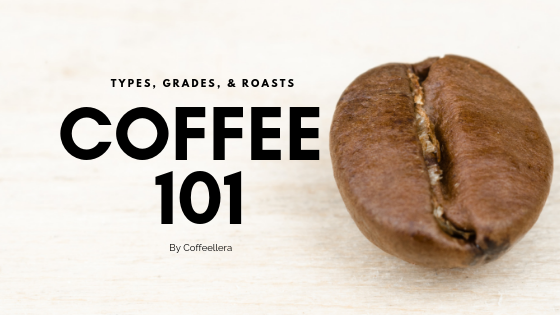
Are you collecting stickers every year for a planner? Are you the one who can’t function in the morning without having a cup of coffee? Or, maybe, are you the student or worker that depend on it for two or three days all-nighter? Regardless of your situation, one way or another coffee always finds its way to your routine. It makes you wonder what makes a coffee that can boost your productivity.
Know: Types of Coffee Bean
Fun fact: there are four main different types of coffee beans (Arabica, Robusta, Excelsa, and Liberica).
Arabica – it’s considered the most famous type of coffee bean, which covers 60% of the world’s coffee production. Aside from its low acidity, Arabica produces more flavors and aroma compared to others. This encourages manufacturers to invest and create different types of Arabica. But this coffee plant is sensitive to its environment. It doesn’t adjust well to areas with low altitudes.
Robusta – it’s known as the second go-to coffee plant among the four types. Its acidity and higher caffeine level made it inferior to Arabica. Robusta’s coffee production requires lesser production cost and grows in a hotter climate.
Liberica – it’s a rare coffee plant. Unlike the previous types, only a few countries invest in Liberica and the Philippines is one of them. Filipinos call it kapeng barako. It has irregular shapes with earthy taste and aroma. The flavors are not as friendly as Arabica or Robusta.
Excelsa – it’s recently named as a type of Liberica but initially recognized as two different types of coffee beans. However, their similar similarities inspired scientists to group them into one. Southeast Asia serves as a huge supplier of Excelsa.
Learn: Coffee Bean Grades
Fun fact: your coffee beans have grades and they are based on screen size. The five classifications identify coffee beans with smaller or larger sizes. This pertains to which beans grew in higher or lower altitudes. You also need to take note that there are standards in grading your coffee beans: New York, Central America, Brazil, Africa, and ASEAN.
Here’s an overview:
- Grade 1 – This means coffee beans have no defects.
- Grade 2 – This means coffee beans have less than six defects.
- Grade 3 – This means coffee beans have less than 13 defects.
- Grade 4 – This means coffee beans have around 24 to 86 defects.
- Grade 5 – This means coffee beans have more than 86 defects.
Discover: Types of Coffee Roasts
Fun fact: your coffee is sensitive to heat that it has different types of roasts. Before they end up on your table, coffee beans undergo different processes to reach their desired taste. These processes produce flavors and aromas.
Light roast – it turns beans into light brown, which is also called as the first crack. It serves as the first part of opening your beans. Light roast makes your coffee light in taste, fruitier flavor, and pronounced acidity. (e.g. Light city, Half city, or Cinnamon roast)
Medium roast – it produces medium brown coffee with a non-oily surface. This is also your conventional coffee taste. It has a stronger, caramelized taste compared to light roast. (e.g. City, American, or Breakfast roast)
Medium-dark roast – it makes dark brown coffee with a slightly oily surface, which known as the second crack. This roast enables you to have a bittersweet aftertaste. It also has a more pronounced taste and aroma. (e.g. Full City)
Dark roast – it creates your strong black coffee because of its nearly black color. Unlike the others, bitterness and strong flavor dominate it. The good thing is it has less acidity than other types of roasts. (e.g. Continental, French, Italian, or Espresso)




